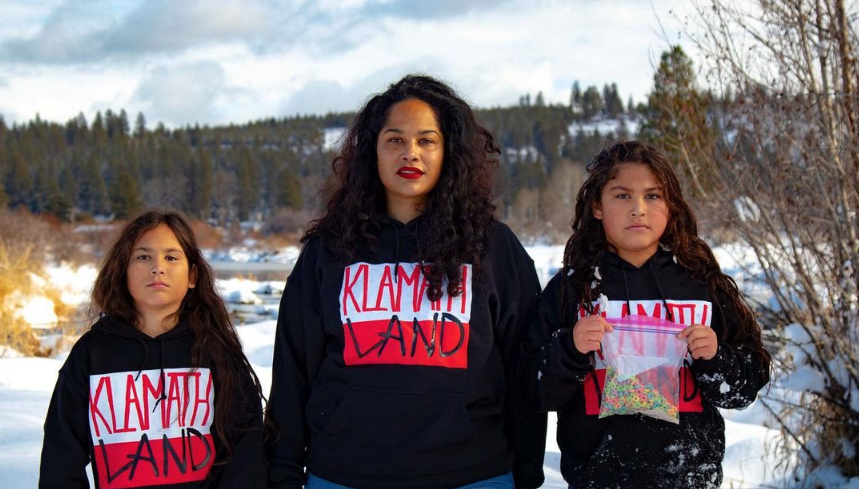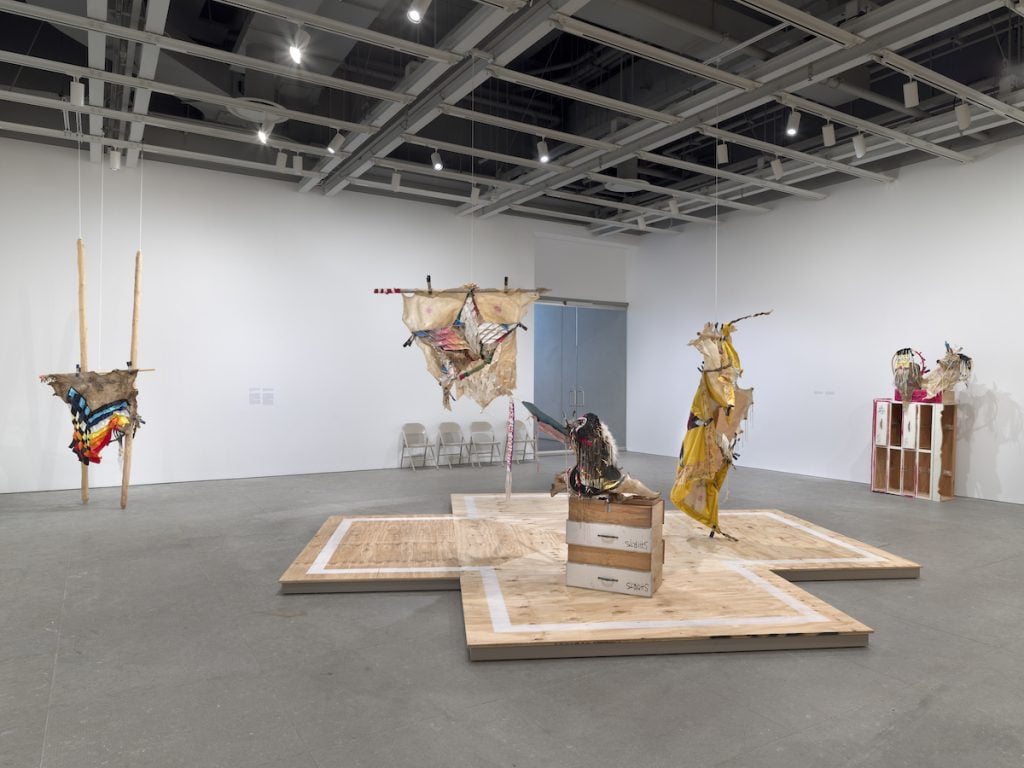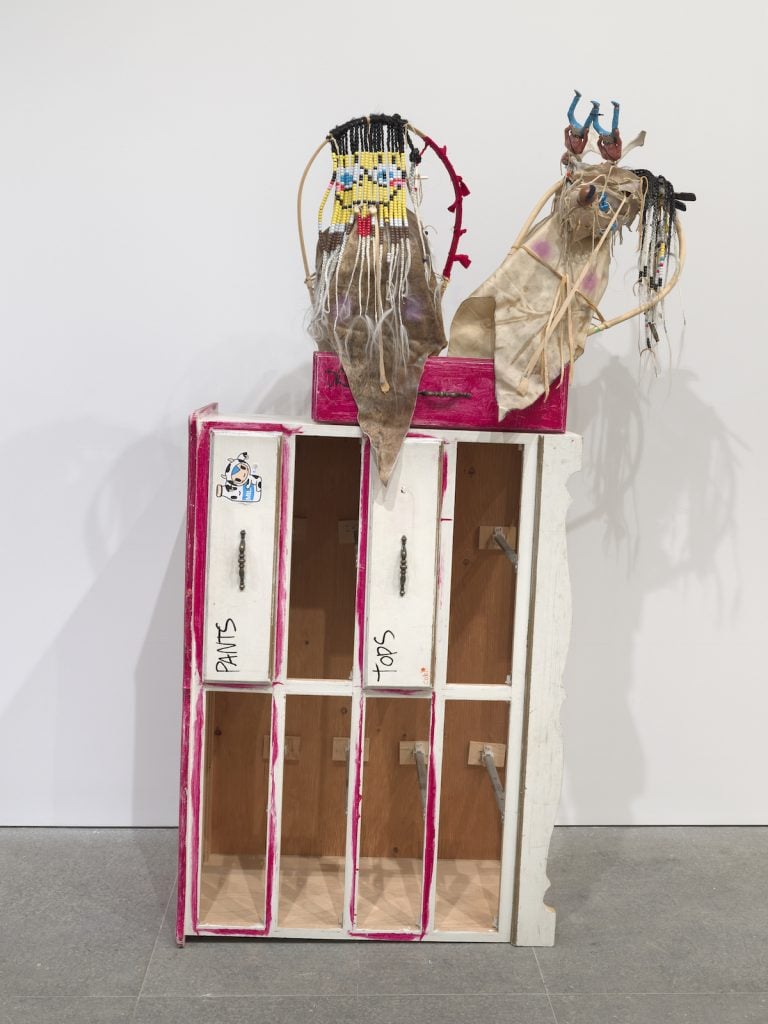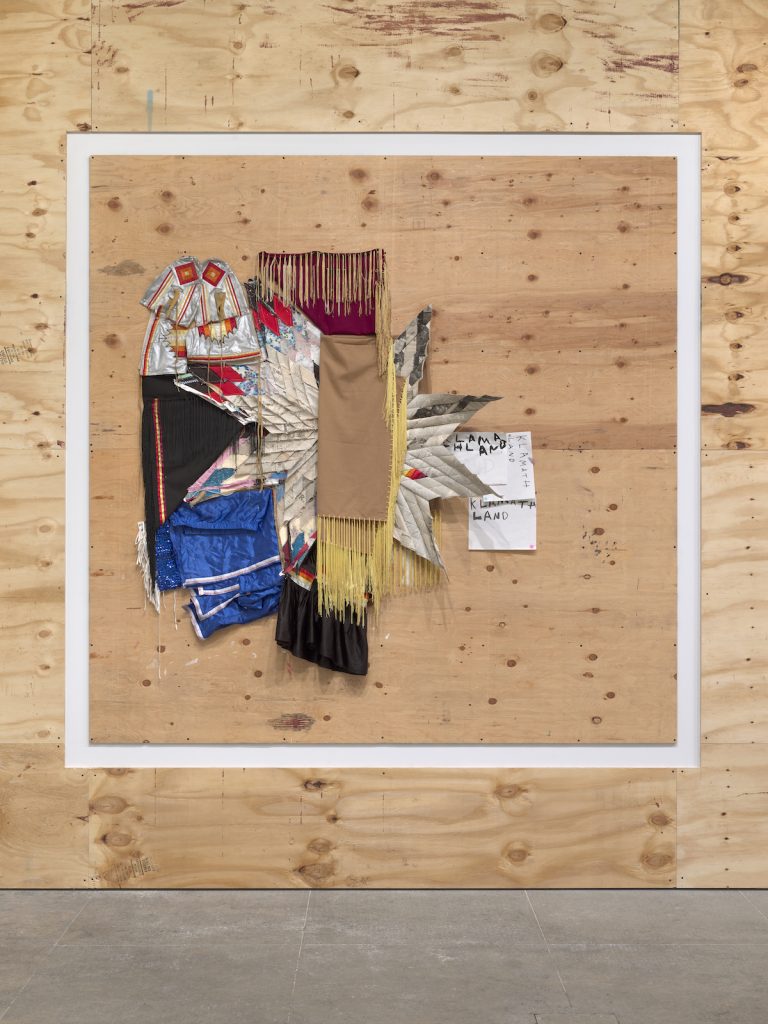Art & Exhibitions
How a Sojourn Into Tribal Politics Awoke Artist Natalie Ball to the Power of the Personal
“Bilwi naats Ga’niipci,” an exhibition of new sculptural assemblages by the Native artist, is on view now at the Whitney.

“Bilwi naats Ga’niipci,” an exhibition of new sculptural assemblages by the Native artist, is on view now at the Whitney.

by
Taylor Dafoe

A solo show at the Whitney is a major achievement for any artist, but in the case of Natalie Ball, whose exhibition “Bilwi naats Ga’niipci” currently occupies the museum’s first-floor gallery, the feat is extra impressive.
Just over a year ago, Ball wasn’t making art at all. The 43-year-old artist—whose assemblages of Native relics and quotidian objects have earned her numerous grants, solo exhibitions, and an MFA. degree from Yale—was in the middle of a year-and-a-half hiatus from her studio, a break she took to focus on her duties as a newly-elected official on the Klamath Tribal Council in southern Oregon. The hiatus wasn’t necessarily planned, nor was the pivot to politics.
“I love my tribe, I love the spirit of our people, but I never saw myself being an elected official,” Ball explained with a giggle, as if still amused by the title. The charming artist laughs a lot, often at her own quirks, but there’s an edge to her humor that seems at odds with the starchy, buttoned-up vibe of most politicians.
Ball’s 2022 bid for the Tribal Council was inspired by her two youngest children, who had started to grow curious about aspects of territory life that once seemed like incontrovertible truths. “They had questions about why our resources were being taken, why our water was so sick,” Ball recalled. “And I was like, well, shit, I don’t have answers for them. Let me go find [them].”
Suddenly, art was less urgent. “I just felt like there was an immediacy to council because of how connected we are to our territory, to our water and animals… It was more important,” she said.

Installation view of “Natalie Ball: bilwi naats Ga’niipci” at the Whitney Museum of American Art, New York. Photo: Ron Amstutz.
Written in maqlaqsyals, the traditional language of the Klamath and Modoc peoples, “Bilwi naats Ga’niipci” translates to “We smell like the outside.” The title is a variation of a phrase popular in Ball’s corner of Oregon, where the piney aromas of the mountain air always seem to follow one indoors. But at the Whitney, she has a different meaning in mind.
The artist identifies as Black and Native, but owning both ethnicities has, at times, left her feeling alienated from the communities of each. “To claim my blackness is also to compromise my indigeneity. I’m expected to feel that way, but I’m not doing that. I don’t do that in my life, and I don’t do that in my work. I don’t walk that way.”
The exhibition’s title, she continued, is a “gesture toward accepting and belonging and acknowledging”: you smell like the outside, but you’re welcome to come in. “Because you can’t tell me who I am. I’ll tell you who I am.”

Natalie Ball, Sponge Bobby & The Fork-ed Horn Dancers (2023). Photo: by Ron Amstutz.
Ball’s sculptures are deeply personal, each a mishmash of found objects that are uniquely meaningful to her. Some materials speak to the artist’s Native or Black heritage; others to her home and family. In Sponge Bobby & The Fork-ed Horn Dancers (2023), for instance, artificial braids adorned with bone beads are tied to strips of elk rawhide and a pair of very stereotypical “Indian” action figures. It’s all mounted atop a dresser once used by her kids.
The artist, who self-describes as a “hoarder,” is drawn to objects for any number of reasons—their aesthetic characteristics certainly, but also their texture, their history, their smell. For her, no material is off-limits‚ not even the pieces of cultural or sentimental value. Previous works have featured her father’s moccasins, her late auntie’s quilt tops. In the Whitney exhibition’s Dance Me Outside (2023), Ball’s own clothes are stitched to 19th-century newspaper clippings of the Modoc War—a violent fight against the U.S. army that saw hundreds of tribal members displaced from their homelands to Oklahoma. The casualness with which Ball cut up these old and fragile pieces of paper only sharpens her message.
“Everything is sacred, but nothing is really sacred in the studio,” she explained. “Everything can be cut up and destroyed. Nothing is babied in there.”

Natalie Ball, Dance Me Outside (2009/2023). Photo: by Ron Amstutz.
The union of Ball’s found items isn’t always elegant either. At the Whitney, materials are stacked and draped, held together with visible twist ties, clamps, or rope. This sense of tenuousness animates her arrangements, but makes them feel tender too, as if the mix of cultural experiences that define the artist are only tethered by a thin thread.
Nothing about Ball comes off as tenuous. She is strong-willed and confident, wholly comfortable with who she is. But she has learned the importance of showing the seams in her work. “In quilting,” she said, “you’re taught to hide your stitches. But I think that’s where the beauty is—all the stitches and the space and the labor of it. I’m not trying to hide anything. I want you to see how hard I worked!”
Ball returned to the studio in earnest last year, partly because she had to prepare for the Whitney exhibition and others, but also because her ongoing experience with the Tribal Council motivated her to do so. “Art is faster than an MOU. It can work harder and faster than any meeting where you’re shaking hands,” she said. “I have a lot more respect for my studio and my practice now. I just feel like I honor it a bit more.”
Ball’s search for answers led her to politics, but politics reopened her to the power of the personal in her work. “I just know that I have to say things louder and harder,” she said. “It’s important that I just get straight to point. I feel like my work is needed. I feel like it’s important. I don’t really know if I understood that before.”
“Natalie Ball: Bilwi naats Ga’niipci” is on view at the Whitney Museum of American Art, 99 Gansevoort Street, New York, through February 19.
More Trending Stories:
A Case for Enjoying ‘The Curse,’ Showtime’s Absurdist Take on Art and Media
Artist Ryan Trecartin Built His Career on the Internet. Now, He’s Decided It’s Pretty Boring
I Make Art With A.I. Here’s Why All Artists Need to Stop Worrying and Embrace the Technology
Sotheby’s Exec Paints an Ugly Picture of Yves Bouvier’s Deceptions in Ongoing Rybolovlev Trial
Loie Hollowell’s New Move From Abstraction to Realism Is Not a One-Way Journey